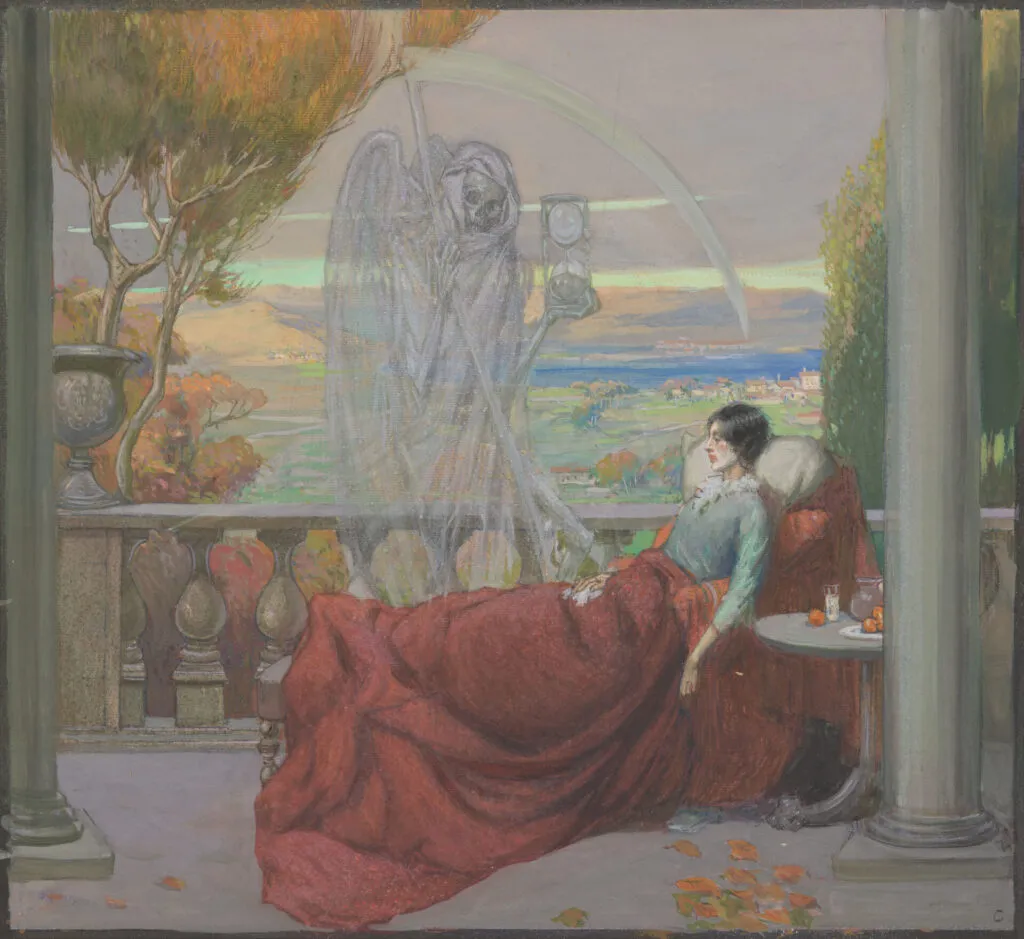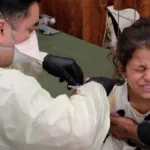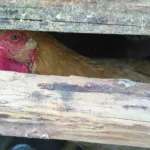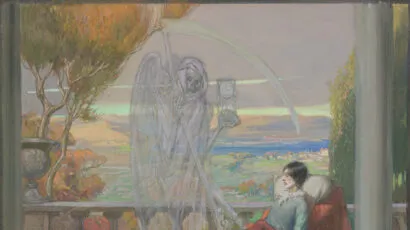We’re back: How tuberculosis is set to surge globally once again
By Erik English | March 27, 2025
 Credit: A sickly young woman sits covered up on a balcony; death (a ghostly skeleton clutching a scythe and an hourglass) is standing next to her; representing tuberculosis. Watercolour by R. Cooper, ca. 1912. Source: Wellcome Collection.
Credit: A sickly young woman sits covered up on a balcony; death (a ghostly skeleton clutching a scythe and an hourglass) is standing next to her; representing tuberculosis. Watercolour by R. Cooper, ca. 1912. Source: Wellcome Collection.
On January 24th, 2025, the Trump administration announced a freeze on all foreign aid funding for 90 days, during which time the administration would evaluate which foreign aid contracts were in the interest of the United States. Since then, the Department of Government Efficiency (DOGE), led by Elon Musk, has decimated the US foreign aid apparatus, which many countries rely on for their public health infrastructure. The Center for Global Development estimates that more than three million people could die within a year if foreign aid funding is not restored.
On March 5th, the World Health Organization (WHO) issued a warning that the funding cuts to USAID would lead to a resurgence of tuberculosis (TB) globally. A broad swath of Americans may be less familiar with the continued prevalence of TB because of its low prevalence in the US and Europe, but in 2023, TB killed 1.25 million people worldwide, supplanting COVID-19 as the planet’s deadliest infectious disease.
A new book by the novelist and TB activist John Green, Everything is Tuberculosis: The History and Persistence of Our Deadliest Infection, highlights the history of TB, and the unique way that the disease reflects the biases of society. Today, when the disease has been effectively cured in rich countries, it is still devastating poor communities around the world. The Trump administration’s funding freeze is the latest example of how humanity is choosing to let tuberculosis spread.
The romantic disease. Monday, March 24th, was World Tuberculosis Day, which celebrates the discovery of mycobacterium tuberculosis, the bacteria that causes tuberculosis, by Robert Koch in 1882. At the time, TB was broadly known as “consumption” and killed one in seven people in Europe and the United States.
For much of its history, TB was romanticized and thought to elevate artistic ability—it was often described as a blessing. Many famous artists, poets, and writers suffered from the malady, and it was thought that the disease formed a sort of exchange between life and art. “Consumption was believed to bring the creative powers to new levels,” Green writes, “helping artists get in deeper touch with the spirit as their worldly bodies literally shrank away.” Symptoms of tuberculosis included pale skin, thinness, and sunken eyes, which Green points out, became “signals of beauty in Europe and the United States.” For women, TB was considered, as Charlotte Bronte writes, “a flattering malady.”
The pervasiveness of TB inevitably shaped the world we live in today. In some cases, the influence is small. Green tells the story of how John B. Stetson seeking dry climates in the American West to treat his tuberculosis led to the creation of the cowboy hat. In others, the effect is more pronounced. For instance, the broad understanding that dry desert climates could help treat TB led many white “lungers” to migrate to New Mexico, which changed the racial makeup of the territory and made it more palatable in an age of overt racism—paving the way for statehood. TB may even have had a role in the outbreak of World War I: The three assassins of the “Black Hand,” including Gavrilo Princip, were “suffering from tuberculosis and knew they would not live long. They were therefore willing to give their life for what they believed was a great cause.” That “great cause” was the spark that initiated world war: the assassination of the Archduke of Austro-Hungary, Franz Ferdinand.
The discovery of mycobacterium tuberculosis was the first step towards developing effective treatments of the disease. Tuberculosis predominantly, but not exclusively, attacks the lungs—and the infection can be spread to others through the air when people speak or cough. It can also be contracted by drinking raw milk from cows with the bovine version of tuberculosis, mycobacterium bovis. In the first half of the 20th century, milk pasteurization requirements dramatically reduced TB infections, particularly among children.
Today, there are a variety of methods to treat TB. The first step is detection. In wealthy countries, this is performed using an X-ray machine. In low and middle-income countries with the most cases of TB, the primary means of detecting TB is by examining sputum with a microscope. Microscopy can be effective in detecting highly infectious individuals but is less reliable for people who have extra-pulmonary TB, who are coinfected with HIV, or who have a latent case of TB. Once detected, a treatment regimen has to be developed based on the severity of the infection, but those treatments are not equally available around the world.
Medical injustice. The crux of Green’s book centers on how the unequal availability of tuberculosis treatment is a form of medical injustice. Throughout history, TB has been used as a tool of racial and social segregation. Prior to Koch’s discovery of the bacterium that causes tuberculosis, slaveholders thought that the romanticized “consumption” disease and its artistic implications was a sign of white superiority over Black Americans. After Koch’s discovery, the logic flipped, and the consensus was that high rates of TB among Black Americans living in cramped housing and dirty conditions also conveniently proved that whites were superior by virtue of their stronger respiratory systems.
Even after treatments emerged to combat TB, their geographic availability revealed the prevalence of prejudice. Starting in the 1980s, the emergence of HIV/AIDS allowed TB to spread more quickly through weakened immune systems, particularly in Africa. And yet, in the early 2000s, USAID administrator Andrew Natsios claimed that anti-retroviral drugs could not be distributed in Africa because Africans didn’t have clocks and couldn’t adhere to the strict treatment schedule.
In his book, Green writes, “The infection has long exploited human biases and blind spots, wriggling its way through the paths injustice creates. Of course, tuberculosis doesn’t know what it’s doing, but for centuries, the disease has used social forces and prejudice to thrive wherever power systems devalue human lives.”
The lack of consistent funding and resources to fight tuberculosis has kept prices high for medication in at-risk communities and allowed the disease to mutate and develop resistance to antibiotics. When Johnson & Johnson received public funding to develop Bedaquiline— a drug produced to treat drug-resistant TB and extensively drug-resistant TB—the company sought to extend its patents in countries with a high prevalence of TB to prevent generic production at lower costs.
After two TB survivors filed a dispute with the Indian patent office, the Indian government decided not to extend the J&J patent. Additional protests in other countries and objections from global health organizations led J&J to withdraw the patent extensions and allow for generic production. Green was one of the prominent voices mobilizing support for denying the patent extensions.
The once and future king. The sudden and immediate halting of US foreign aid means that millions around the world are at greater public health risk. On March 26th, the New York Times reported that the Trump administration would no longer support Gavi, an organization that provides vaccines to children in poor countries. Some grants for HIV and tuberculosis will be allowed to continue, but organizations dedicated to stopping the spread of tuberculosis, like the Stop TB Partnership, are already downsizing in the aftermath of the cuts, and health clinics that relied on US funding are shutting their doors. Allowing TB treatments to stop will create more opportunities for the disease to adapt. If TB is able to develop complete antibiotic resistance, it could easily spread across the interconnected planet.
Kansas is already experiencing the largest outbreak of tuberculosis since the 1950s. Sheree Kheitt, the Director of Public Health Strategy and Programs at Community Catalyst, wrote, “Kansas has consistently refused to expand Medicaid, weakened local health infrastructure, and failed to invest in community-based disease prevention and education programs.” The Trump administration’s decision to halt foreign aid funding and Elon Musk’s decimation of global public health systems will allow TB to spread further, to become more resilient to treatment, and to put at risk millions of lives—in the United States and elsewhere.
As Green puts it: “A preventable, curable infectious disease remains our deadliest. That’s the world we are currently choosing.”
Together, we make the world safer.
The Bulletin elevates expert voices above the noise. But as an independent nonprofit organization, our operations depend on the support of readers like you. Help us continue to deliver quality journalism that holds leaders accountable. Your support of our work at any level is important. In return, we promise our coverage will be understandable, influential, vigilant, solution-oriented, and fair-minded. Together we can make a difference.
Keywords: DOGE, Elon Musk, John Green, Trump, USAID, tuberculosis
Topics: Biosecurity















